Easy-to-plant succulents—from every variety of cacti to medicinal aloe vera—are foolproof picks when it comes to building low-maintenance and eye-catching containers. Because they practically take care of themselves, they’re a great choice for gardening beginners and veterans alike. Available in all shapes and sizes, succulents are the ideal plants for mixing and matching. Don’t be afraid to get creative with scale and composition when crafting your container garden. The more variety you infuse, the more interesting your creation. These dry-climate gems thrive in Southern heat during summer months, but they can also be brought indoors for safekeeping when the temperatures shift with the seasons. Check out this informative gallery for a step-by-step guide on how to plant succulents and keep them flourishing. Ready to create a stunning container garden? Dig in!
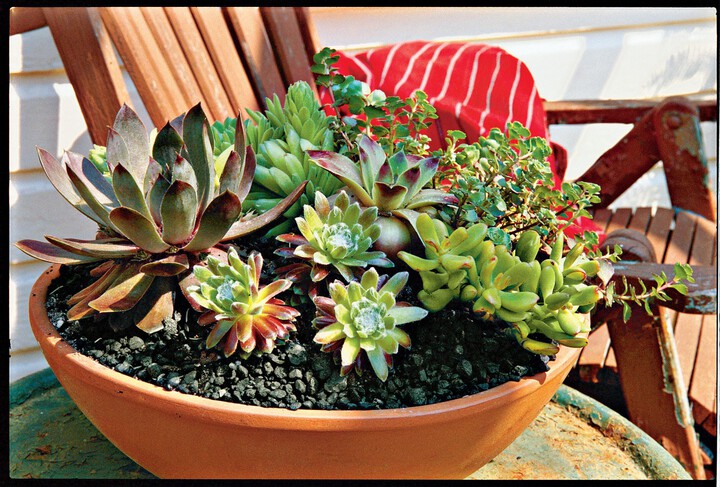
Planting Succulents
If you’re trying to grow and cultivate your own green thumb, succulents are a great starting point. You won’t find any plants better adapted for growing in pots. Most succulents are native to arid regions and store water in their fleshy leaves, stems, and roots, enabling them to resist drought. This means they do not need to be fussed over with frequent watering, so you can go ahead and enjoy a weeklong summer vacation without giving them a second thought. Plus, their funky shapes and diverse varieties make growing them truly fun. Learn how to make a diverse succulent container arrangement in four easy steps.
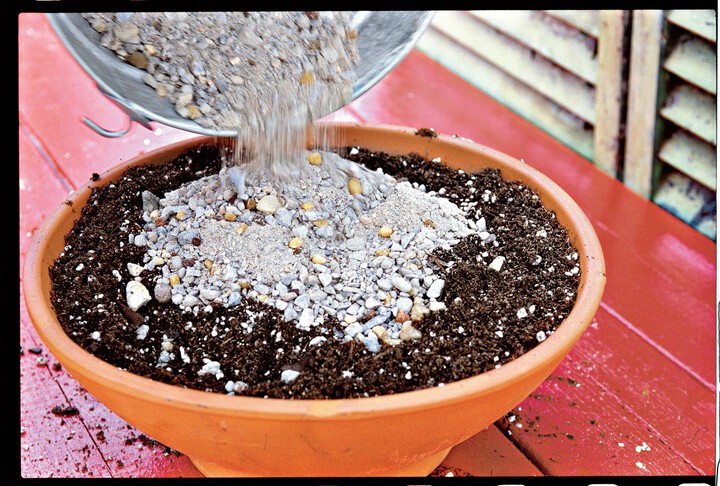
Step One
First, go to the garden center and purchase a variety of succulents in an array colors and shapes. For this container, we purchased 6; depending on the container’s size, you may need more or less (find a list of common succulents on slide 4). You can find the soil, gravel, and container at the garden center as well. When you get back to your home, full the wide, shallow dish three-quarters full with potting mix, and then cover the top with gravel. Succulents don’t need a lot of root space, as they store most of their water and nutrients in their leaves. Gravel helps the soil drain; steer clear of sand, because it can become too compact and lead to root rot.
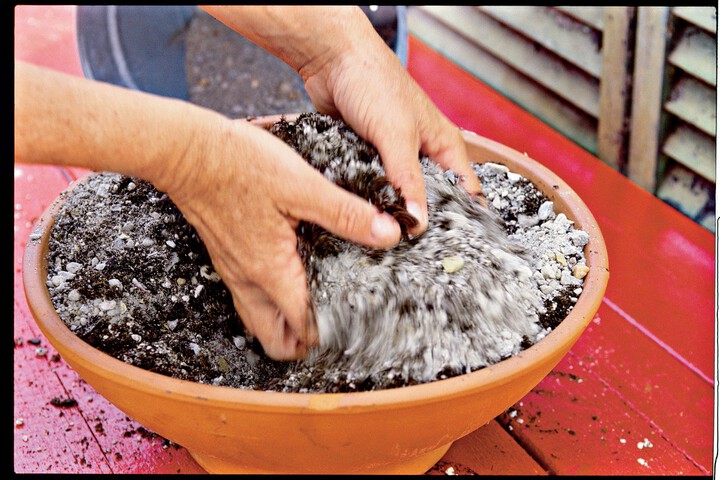
Step Two
Blend the soil and gravel thoroughly, and moisten with water. New plantings should be watered well – but only once. The water will settle the soil. But if you water them too much, you will cause them to die from overwatering. When you give a succulent too much water, it will fill up its water storage tissues to a point of damage. You will know if your succulent is overwatered by its overly puffy-looking stems and leaves, and a general look of unhealthiness. Overwatering leads to root rot, which can kill your succulent. And we are trying to plant live succulents, here.
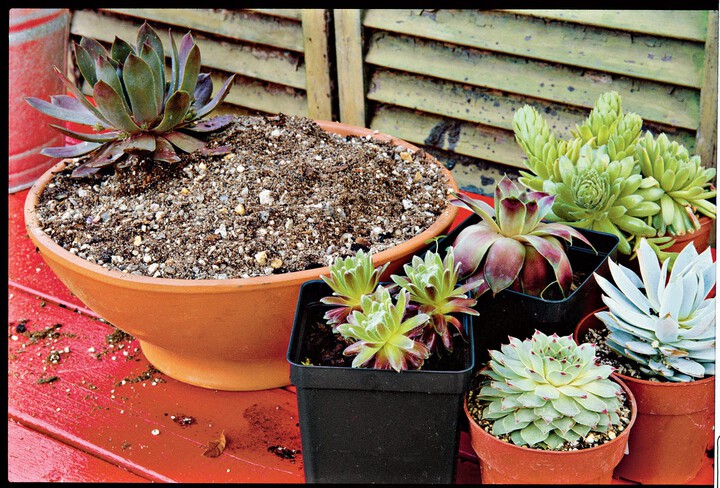
Step Three
Remove the plants from their nursery containers, and plant the largest one on one side of the pot. Surround it with the other plants, clustering similar shapes together. Some common succulent types include:
Echeveria – The crown jewels of all rosette-forming succulents, this type can be found in a variety of colors
Sedum (stonecrop) – These flat-lying succulents are perfect for trailing out from the edge of containers.
Aeonium – Although they come in a variety of colors, we love these fleshy, long-leaved rosettes in lemon yellow
Other types we love: Agave, Dudleya, Aloe, Cotyldedon, Crassula, Sempervivum, Graptopetalum, Kalanchoe, and Senecio.
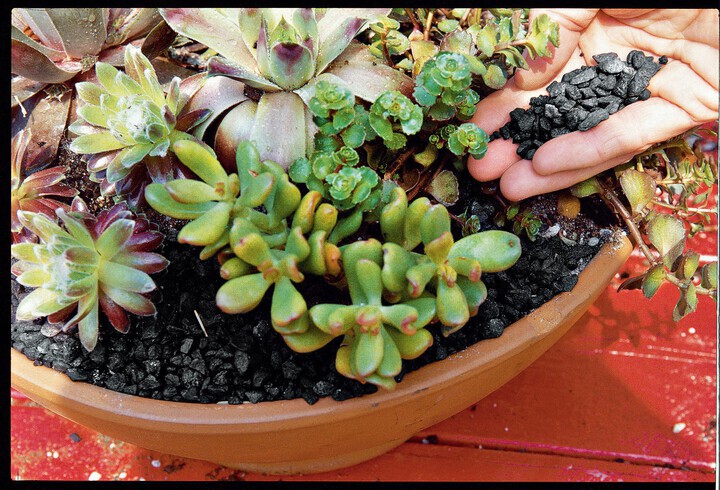
Step Four
Sprinkle dark-colored aquarium gravel around each plant so that the soil is covered.
To care for your succulent container garden and prevent root rot, let the soil dry out completely before watering again. Succulents thrive in well-drained soil, but require more water in the early spring when the plant is growing and less during the summer and winter. During the winter, succulents enter a dormant period. You may only need to water your succulents as infrequently as once per month during the winter, and as much as once/week during the springtime growing period (but only when the soil is dry). Keep your succulent container in a place that it is exposed as much sun as possible.